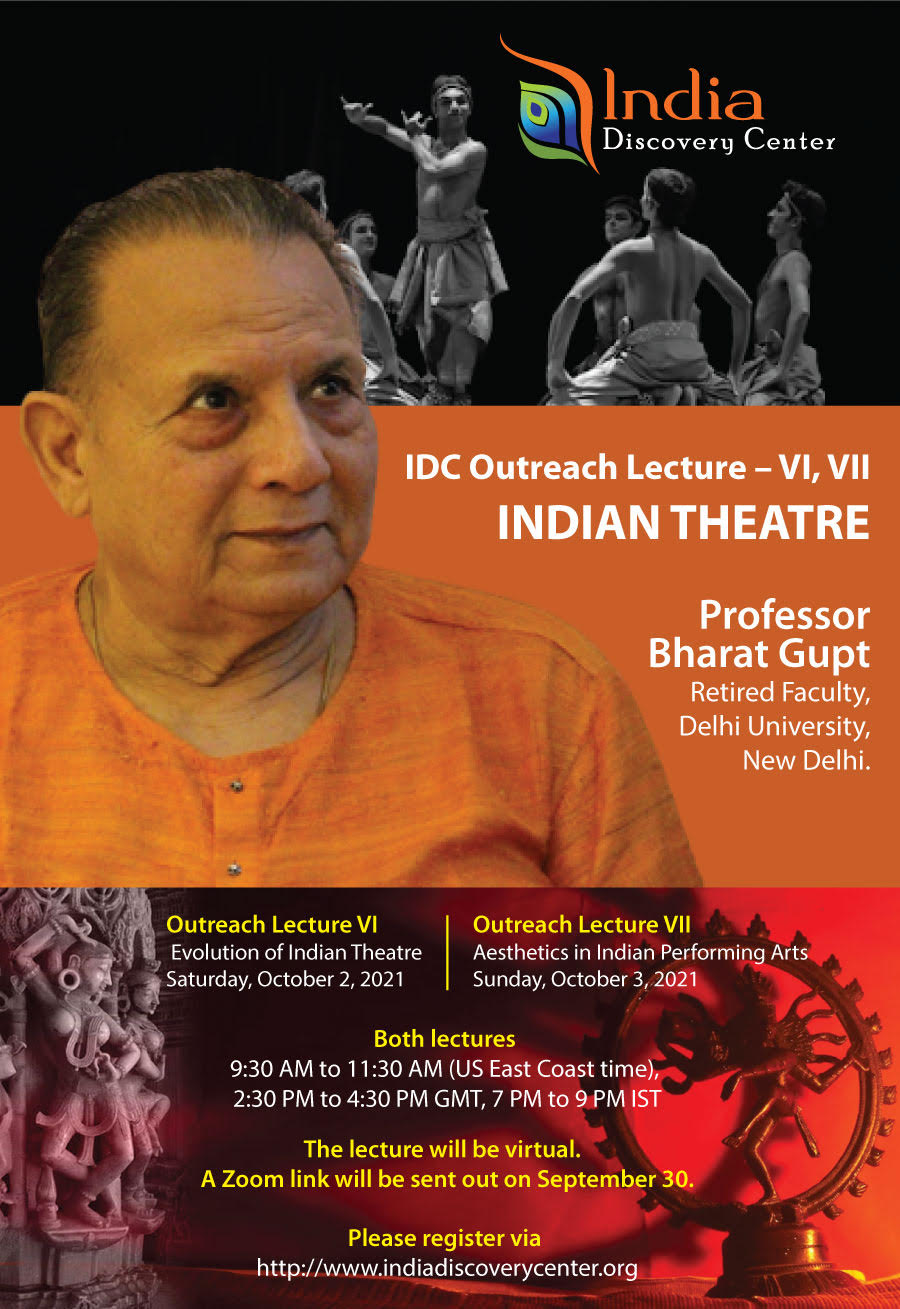
Outreach Lectures VI and VII – Indian Theatre
Presenter
Professor Bharat Gupt
Retired Faculty,
Delhi University, New Delhi
Professor Bharat Gupt
Bharat Gupt is a classicist, theatre theorist, sitar and surbahar player, scholar of Hinduism, musicologist, cultural analyst, and a newspaper columnist. He served in the Faculty of Delhi University for thirty-nine years retiring in 2011. He is trained in both Western and traditional Indian knowledge systems, using the texts in Hindi, English, Gujarati, Sanskrit and Greek. He was a McLuhan Fellow for Communication at the University of Toronto, and a Senior Fellow at the Onassis Foundation, Greece where he researched on classical Greek theatre. He has lectured extensively in India, North America, Europe, and Greece on Indian Music, Theatre theory and Hinduism. He serves as a Visiting Faculty member at National School of Drama, Delhi and a Trustee & Executive Member at Indira Gandhi National Centre for the Arts.
His major books include: Dramatic Concepts: Greek and Indian (1994,96,2006-16-19), Natyasastra, Chapter 28: Ancient Scales of Indian Music (1996, 2019), Twelve Greek Poems into Hindi (2001), India: A Cultural Decline or Revival? (2008). He is popular on his Youtube channel with 245 video talks.
IDC Outreach Lecture VI
October 2, 2021, 9:30 AM (US EST), 7 PM (IST)
Evolution of Indian Theatre
The story of Indian theatre begins with rhythmic movement of the body in pure delight. To this movement were added expressions of face and postures of hands and feet showing feelings of joy, grief, astonishment, anger and so forth. It’s the way growth takes place in a child even today. The first dancer, in the Indian tradition was Shiva called Nataraja. He dances with his partner Uma. His movements are forceful and are called Tandava, whereas Uma, makes soft motions and her dance is called Lasya. A wide expression of thoughts and emotions through age old stories about gods, men and lower spirits showing their feelings and actions developed into the art of theatre. Representation of gods, demons, kings, merchants, warriors, artisans and artists telling of their romances, wars and spiritual journeys developed into ten dramatic genres. As theatre talked of the meaning of life, it was called the Fifth Veda available to all, high and low.
IDC Outreach Lecture VII
October 3, 2021, 9:30 AM (US EST), 7 PM(IST)
Aesthetics in Indian Performing Arts
A play, film or story from India, is traditionally composed with a lot of music and dance. Its characters are often from old myths and legends. There are heroes, villains and often a clown. The technique of arousing love, anger, jealousy, fear and other emotions makes a story and the presentation wholesome. Creating emotional excitement of a high pitch and enjoying it has been called Rasa in the Indian Arts. In Europe the notion of aesthetic pleasure is associated with Beauty which resides in the Form of an object of Art. In India, it hinges on the emotional states that elevate into the sublime experience “Rasa”. It is generated in theatre by the gestures, use of voice, musical instruments, dramatic songs and animated action in the performance space. Other arts imitate the tools of theatre in creating independent genres like sculpture, poetry, painting, musical ensembles etc., in order to create Rasa.